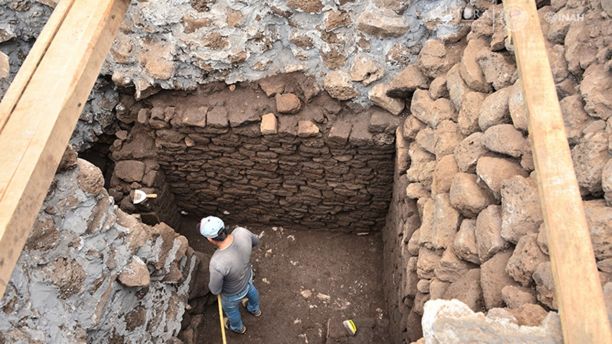Archeologists made a stunning discovery in Mexico on Wednesday when they uncovered an ancient temple nestled inside an Aztec-era pyramid that was damaged during last September’s 7.1-magnitude earthquake.
Scientists from Mexico’s National Institute of Anthropology and History (INAH) were checking for structural damage on the Teopanzolco pyramid in Morelos state, about 43 miles south of Mexico City, with a radar when they discovered the 20-by-13-feet temple.
“In spite of what the earthquake meant, it is necessary to be thankful that, for this natural phenomenon, this important structure [appeared] that changes the dating of the archaeological site,” the institute said in a news release.
The temple dates back further than the pyramid, which was built sometime between 1200 and the Spanish conquest in 1521. Archeologists believe the temple was built between 1150 and 1200 and was dedicated to the Aztec rain god Tlaloc.
An incense burner and ceramic shards were also located among the remains.

An incense burner and ceramic shards were also located in the remains. (National Institute of Anthropology and History)
Barbara Koniecza, archeologist from the INAH Morelos Center, said it was common for pre-Hispanic cultures to build one temple over another.
“Possibly, on the right side are the remains of another temple dedicated to Huitzilopochtli,” she said in a Wednesday news conference.
She added that the pyramid endured extensive damage during the September quake.
“The pyramid suffered considerable rearrangement of the core of its structure,” Koniecza said.
Koniecza explained the quake left big gaps between the stones, causing the pyramid to be unstable. Scientists are working to restore the pyramid’s main structure.
The earthquake struck on Sept. 19, causing significant damage to many historical monuments, including colonial churches. More than 200 people were killed in Mexico City and many people were trapped under rubble when buildings were toppled.
The Associated Press


